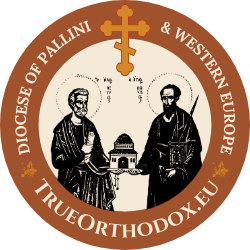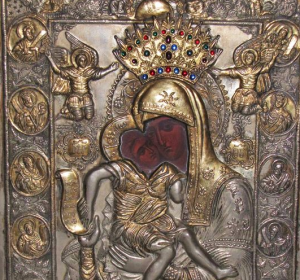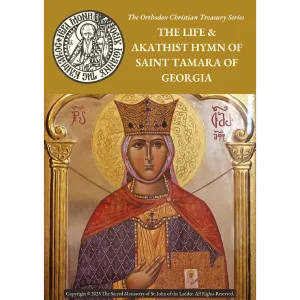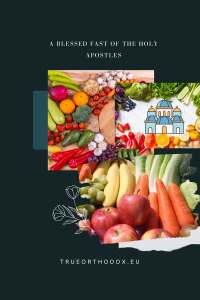From the Orthodox Christian Treasury: The Life of St. Isidora the Fool for Christ of Egypt
The following Life of St. Isidora is presented as part of the Orthodox Christian Treasury, a series dedicated to providing the English-speaking world with new translations from the most complete and detailed manuscript sources of the Lives of the Saints, along with accompanying akathists and Church prayers for veneration at church or home. This account is taken from The Lausiac History, written circa 419–420 AD by St. Palladius, a disciple of St. John Chrysostom. The translation and prayers are sampled from our series, with ebooks available for purchase at https://monasteryorthodoxincense.com/product-category/ebooks/.
Our Venerable Mother Isidora, Fool for Christ of Egypt (+ c. 365)
Commemorated May 1st
[In one of the women’s monasteries of Tabenna1 in Egypt], there was a certain virgin named Isidora. For Christ’s sake, she presented herself as a fool and one who was mad, having chosen this path of ascetic struggle out of her rare humility and self-abasement. The others held her in such contempt that they would not even eat with her, a thing which she accepted with joy. Serving in the kitchen, she fulfilled every obedience for all the sisters, like a submissive slave, ready for any service. This blessed one was, as it is said, the offscouring of the monastery and fulfilled in deed that which is written in the Holy Gospel: “Whosoever will be chief among you, let him be a slave unto all and a servant unto all” (cf. Matthew 20:26; Mark 10:43); and also: “If any man among you seemeth to be wise in this world, let him become a fool, that he may be wise” (1 Corinthians 3:18).
While the other virgins, having been tonsured, wore the koukoulion2 on their heads, her head was always covered with a ragged cloth. Out of four hundred sisters, not one ever saw her eating. She never sat at the trapeza,3 nor did she ever take for herself even a slice of bread, but was content with the crumbs she gathered from the floor after the meal, and with the dregs she washed from the vessels. She never wore shoes and, despite all the reproaches, abuse, and scorn that many directed at her, she never offended anyone nor showed the slightest murmur of complaint.
An angel appeared to the holy hermit Pitirim,4 a man renowned for his spiritual struggles who lived in Porphyrites,5 and said of the venerable Isidora: “Why do you pride yourself on your ascetic feats, as though you were truly pious, living in such a place? Do you wish to see a woman more pious than you? Go to the women’s Tabennese monastery and there you will find one who wears a cloth on her head—she is better than you. For she struggles amidst such a multitude, serves everyone in various ways and, though all despise her, in her heart she never departs from God. But you, sitting here having never lived in the world, allow your mind to wander through the cities.”
Rising from his place, the great Pitirim went to the Tabennese monastery and asked the superiors there to escort him to the women’s community. Having crossed the river, they received him with joy, as a man renowned among the fathers and who had reached a great age in his ascetic labours. When they had prayed, the great one expressed his wish to see all the sisters in person. All of them gathered, but one, Isidora, did not come. The holy Pitirim said, “Bring me all of them.”
When they answered him, “We are all here,” he said, “There is one missing whom the angel showed to me.”
Then they said, “We have one who is mad—she is in the kitchen.”
“Bring her also,” said the great one, “let me look upon her.”
They went to call her. But Isidora, understanding the matter, did not obey; perhaps she too had received a revelation. They brought her by force, saying, “The holy Pitirim wishes to see you.” For his name was famous.
When they had brought her, the great one saw her face and the ragged cloth on her head. He fell at her feet and said, “Bless me, Mother.”
And she, likewise falling at his feet, said, “You bless me, my lord!”
Seeing this, all were astounded and began to exclaim, “Abba! Do not shame yourself: she is mad!”
“You are the ones who are mad,” the holy elder replied, “for she is better than you and me—she is our mother, and I pray that I may be found equal to her on the Day of Judgement.”
Hearing this, they all fell at his feet with weeping, confessing how greatly they had grieved this holy one. One said, “I always laughed at her.” Another, “I mocked her humble appearance.” Another said, “I insulted her, while she remained silent.” And another, “I often poured slops on her.” One said, “I beat her.” Another, “I struck her with my fist.” In short, all of them confessed to some offence they had committed against her.
Having accepted their repentance, the holy Pitirim prayed for them together with her, and after greatly consoling the venerable handmaiden of Christ, he departed from the convent.
A few days later, this blessed one, unable to endure the glory, honour, and services which all the sisters began to offer her, and burdened by their apologies, secretly departed from the monastery. Where she went, where she hid herself, and where she reposed, no one knows to this day. Thus did this valiant, humble-minded, and blessed virgin struggle.
Troparion, Tone 3
Desiring the beauty of Christ, O thrice-blessed Mother, thou didst choose the swift way that leadeth unto Him, even that of humility. Wherefore, He revealed thee as a teacher of monastics and a paragon of imitation of Him. Therefore, with joy we cry aloud to thee: Rejoice, O all-blessed Isidora!
Kontakion, Tone 2
Yearning to attain the abode on high, O Mother, thou didst choose the swift path of humility, through which thou wast led to Christ as a glorious and pleasing fruit, O all-hymned Isidora, receiving incorruptible rewards.
Endnotes
1 Also known as Tabennisi, this was the site in Upper Egypt where St. Pachomius the Great founded the first coenobitic (i.e., communal) monastery in the early 4th century, establishing a new model for the monastic life.
2 Koukoulion: This is the traditional head-covering worn by Orthodox monastics of the “Great Schema,” the highest degree of monasticism. It typically veils the head, neck, shoulders, and upper back.
3 Trapeza: (Greek: τράπεζα, literally ‘table’). The term for the refectory, or dining hall, in an Orthodox monastery where the monastics share their common meal.
4 St. Pitirim (Pitiroun) of Egypt: A disciple of St. Anthony the Great, St. Pitirim is celebrated on November 29th.
5 A desert region and monastic settlement in Egypt, located near the Red Sea. Its name is derived from the porphyry quarries in the area.





